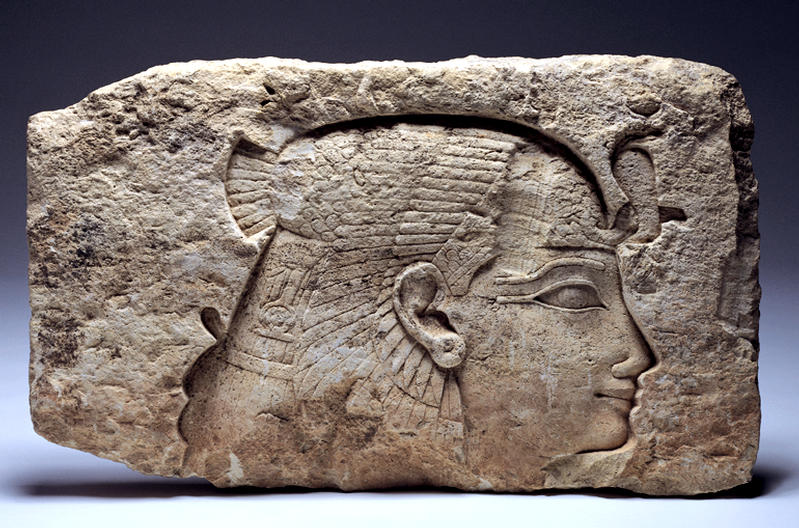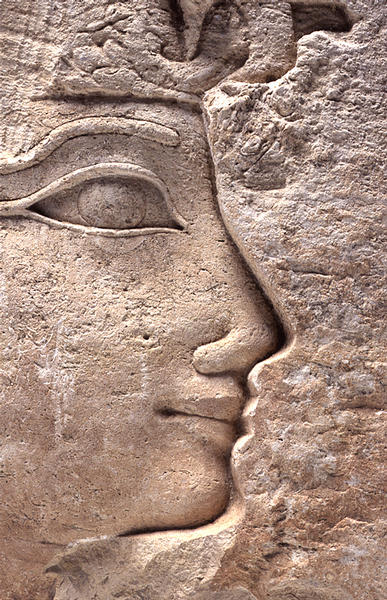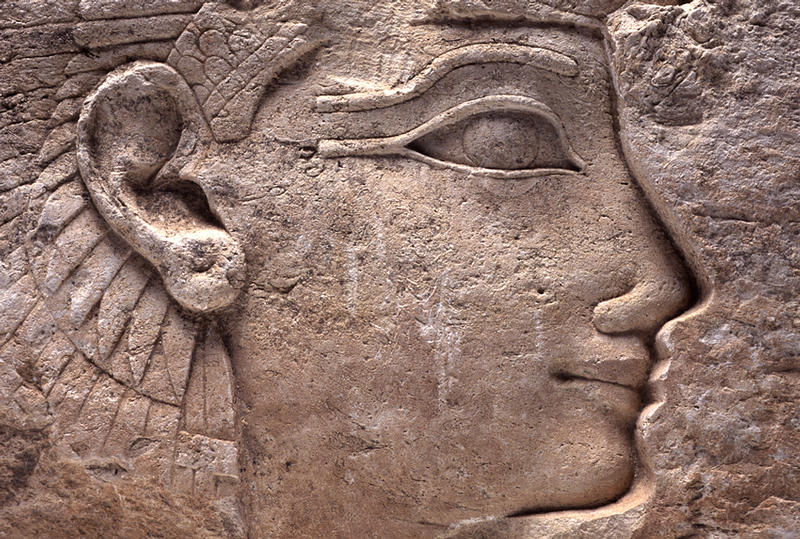王妃頭部浮彫
- エジプト
- 新王国以降
- 前1540年以降
- 石灰岩
- H-51 W-86
技法:沈み彫り
この女王の横顔は「沈み彫り」で彫られている。これは古代エジプト特有の技法で、図像が前に飛び出さないかわりに石の平らな表面から後ろに押しやられている。「沈み彫り」は明瞭な輪郭光と影による明暗効果を生むことを可能にする。屋外の飾り、或いは柱廊玄関の柱の背面のように、壁面の一部分だけが影になっていて、明るい陽射しが絶えず変化する彫刻の細部に当たっている場合に特に適した技法である。
Catalogue Entry
This profile of a queen is carved in sunk relief, a technique peculiar to ancient Egypt, in which the images do not stand out from but instead are pushed back behind the flat surface of the stone.1 The effects of light and shade made possible by the sharp contours of sunk relief made it particularly suitable for exterior decoration or in situations where the walls were only partly shaded, such as behind the columns of a portico, on which brilliant sunlight would expose ever-changing details of the carving.
The queen wears a headdress in the form of a vulture with outspread wings, its talons holding a shen-sign (a hieroglyph in the form of a length of rope, its two ends tied together to make a circle), denoting universal rule. Originally a divine attribute, from early on in Egyptian history the vulture headdress was associated with queens, the queen being regarded as the king's divine counterpart on earth. In the version of the crown seen here, the vulture's head is combined with that of a cobra. When worn by the king--Tutankhamen's gold mask is perhaps the most famous example--the vulture and cobra represent the "Two Ladies": Nekhbet, goddess of Upper Egypt (the south), and Wadjet, goddess of Lower Egypt (the north), indicating that the ruler is under their protection. As part of the queen's insignia, however, the duality takes on additional meanings, such as sky and earth, mother and daughter, the vulture being associated with protective mother goddesses generally, and the cobra with the goddess Hathor as the daughter of Re, the sun god.2 The connection with Hathor is here underlined by the addition of a sun-disk and cow's horns to the cobra's head, these being attributes of Hathor.3
LMB
1. Schäer 1974, pp. 76-79.
2. Troy 1986, pp. 115-21, 122-23; Robins 1993, pp. 23-24.
3. Compare a relief of Hathor and Queen Nefertari in the small temple at Abu Simbel, where the uraeus is similarly adorned with sun disk and cow's horns on both the queen's vulture crown and on the goddesses headdress: Nefertari, Luce d'Egitto 1994, p. 53.


